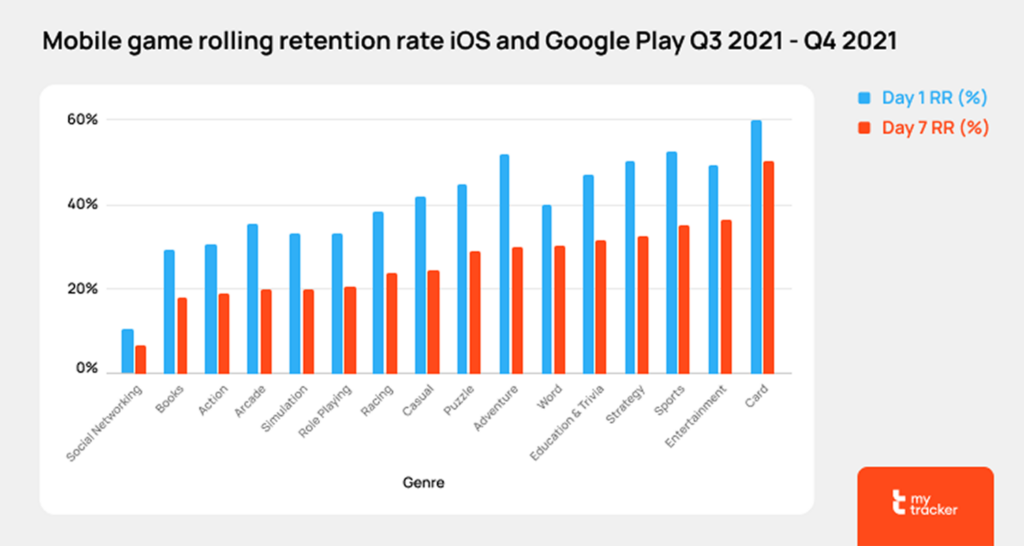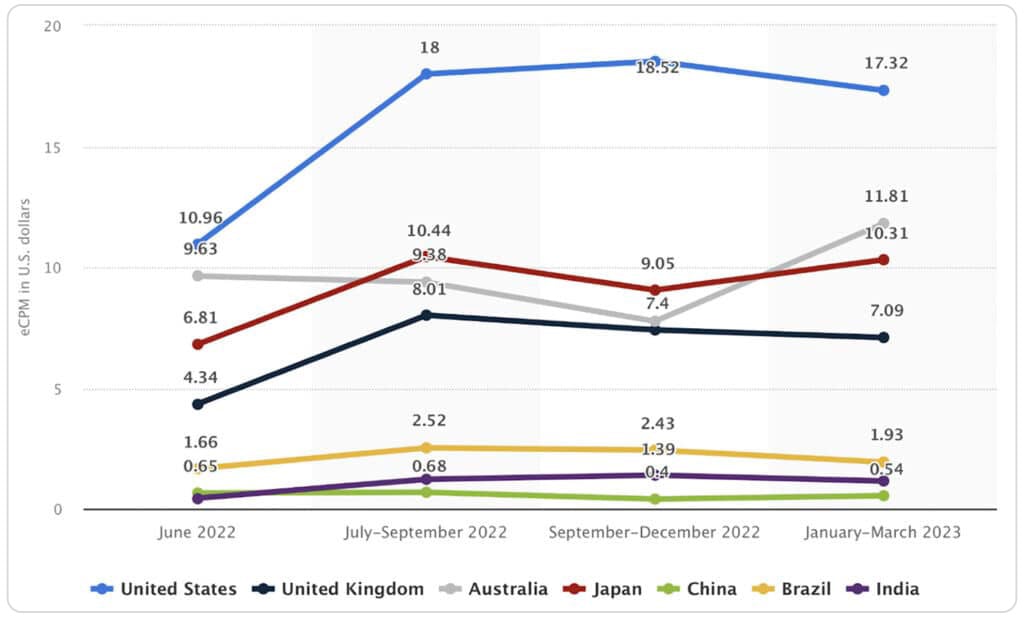User Acquisition (UA) is key to sustainably scaling your game in highly competitive app stores, yet many developers don’t know if their game is ready for it. With so much to do and often alone or with a small team, it’s easy to start doing UA at the wrong time (especially too early), resulting in wasted time, effort, and money.
At Yodo1, we don’t like to see developers throwing money out the window, and wasting time on something that has little chance of working. Before you consider UA, you need to know how to judge whether your game is ready for it.
In this article, we’ll get into the key metrics that need to be considered before doing UA, and explore how these can be improved. Let’s begin!

As with any investment, you want to make sure the numbers are on your side. The metrics we’re going to look at are like secret ingredients in a recipe—get them right, and you’ve got a winning dish. Get them wrong and you’ve created an infinite money-losing black hole. Let’s explore what these metrics are and why they’re so important.
CPI and LTV
Imagine CPI (Cost Per Install) and LTV (Lifetime Value) as a balancing act. CPI gauges the cost-effectiveness of acquiring new users, while LTV gives you a peek into the revenue a player generates over time. The magic happens when you manage to keep CPI low and LTV high – that’s where User Acquisition becomes not just viable but profitable in the long run. Remember, though, that CPI can vary a lot across genres, platforms, marketing platforms, and regions, so don’t take CPI out of context!
Retention
High retention is very important—it signals the loyalty of your players. This is the bedrock of growth and a key indicator that your game has what it takes to grow further. High retention is linked directly to LTV, as players who stick around longer tend to be more likely to drive revenue over the long term.
At this point, someone may ask, “OK but what counts as strong retention? My game’s Day 1 retention is 20%. Is that enough?”
Let’s consider that example. Generally, you would look at retention on Day 1 (D1) as the first indicator of your UA campaign’s performance, but moving forward you need to start looking at longer cohorts to see how many users actually retain beyond the first day. It is common to observe a retention curve up to 60 or even 90 days depending on your game’s genre (it would be very common, for example, for more casual games to retain very few players beyond 60 days).
Remember that every game genre is different, and player behavior and retention rates tend to differ between iOS and Android, so a UA team like Yodo1’s will have different benchmarks depending on the situation. And with that disclaimer out of the way, back to the example.
If D1 retention is 20%, you would then need to look at the falloff in retention over time. Let’s say from D1 to D30 retention decreases by 80% (not unusual). That leaves you with a D30 retention of 4%. Yes, that is close to the average, but is the average good enough?

D1 and D7 rolling retention by genre via Business of Apps
The real question is, if you have retained 4% of players by D30, are they generating enough revenue to have made your UA investment worthwhile?
In most cases, the answer is…probably not but it depends! Yodo1’s UA team generally follows the industry benchmark of around 30% D1 retention. Assuming a similar falloff, let’s say that would be around 7% by D30. In most cases, this should be good enough (depending on other factors) and can be a good point of reference for developers deciding whether or not to invest in UA, although you would still want to aim higher. It’s important to restate here that there are a lot of factors, and each game should be evaluated case by case, and genre by genre. For instance, strategy games may have a lower D1 retention compared to casual games, yet still retain a higher percentage of players long-term.
So, you’ve retained enough players, but enough for what exactly? Enough to make your game profitable, of course! To put it another way, the money your game generates from players over the long term is more than the money you invest into acquiring those players. If not, UA becomes an infinite money-losing black hole (which is bad).
Typical ways to monetize players:
1 – In-app purchases (IAPs)
2 – Ads (like rewarded videos or interstitials)
It’s important to understand how these fit into the overall player experience, and how effective they are in generating revenue. You want players to convert and purchase your IAPs. And if your game uses ads, you want players to interact with and/or view them (obviously). So then, you need to look at the metrics that tell you how well your IAPs and ads are performing.
For IAPs, you should be looking at and optimizing conversion rates for things like consumables, skins, battle passes, ad removal, etc. IAPs should not be an afterthought and if they are, your players will know. A good tip here would be to reflect on the games that make you want to pay for in-game items.
For ads, eCPM (effective Cost Per Mille) is important, as well as IMP/DAU (Impressions Per Daily Active User). eCPM tells you the average earnings for every 1000 ad impressions, helping you understand which types of ads are more profitable and which placements or formats work best in your game. A higher eCPM means more effective ads that resonate with your audience, leading to increased revenue. Meanwhile, IMP/DAU measures the average number of ads shown to each active user daily. This metric helps maintain a balance between engaging the user and not overwhelming them with ads. These two metrics go hand-in-hand to help you create a seamless experience where ads are integrated naturally into the gameplay, adding value to the player experience while also contributing to your monetization strategy.
Finally, to get a bigger picture of your revenue, look at ARPDAU (Average Revenue Per Daily Active User). Optimizing all these monetization metrics over time is important for long-term profitability when doing UA.
Note that specific mobile game monetization benchmark metrics aren’t being provided here because “good” can vary a lot from one game to the next. For example, eCPM factors in the country your players are in, the game’s genre, and the platform, among other variables. The key thing for this article is to understand how these metrics tie into your game’s overall profitability. If your retention is solid but those players who stick around aren’t generating enough revenue for LTV to surpass CPI, your focus should be on improving monetization metrics like eCPM, IMP/DAU, conversion rates, and ARPDAU–before you get into UA.
Rewarded ads eCPM for Android via Statista

At Yodo1, we run UA across our games and our partners’ games on a large scale. It’s enabled us to gather a treasure trove of information, and from that standpoint, the takeaways are clear: if the key metrics highlighted above don’t reach certain benchmarks, running UA campaigns likely isn’t worth it—no matter how good your ads are.
But if your metrics aren’t there, don’t give up! You may not be ready for UA yet, but that’s knowledge that is saving you time and money. Take it as a challenge to optimize and refine your game to improve those numbers so that UA then becomes a viable growth strategy for you later down the line. You can also use Yodo1’s UA and Publishing assessment tool to get a clear picture of where your game is now.
Yodo1 has been in the game (pun intended) for a long time. With billions of players across our games, we’ve learned a lot about what it takes to make a game succeed at each stage of its growth lifecycle. A critical inflection point is what we call ‘scale’. That’s where UA becomes profitable and viable over the long term.
To help developers with effective mobile game growth strategies, we launched the Yodo1 Growth Accelerator Program, which takes a comprehensive approach to preparing games for successful User Acquisition. This begins with a thorough analysis of a game’s key metrics as listed above, comparing them against industry benchmarks to identify both strengths and areas that need improvement. Then we work hand-in-hand with developers to optimize the game and its metrics over time, leveraging our 10+ years of experience as game publishers. On the monetization front, we help boost those monetization metrics and make sure the overall game economy is well-balanced as you move forward and grow.
As your game growth partner, we want to help you take your game from where it is now to the next level, then on the next, and beyond. We believe in the power of games, and the unlimited creative genius of game developers. If this sounds like you, apply for the growth accelerator program today!